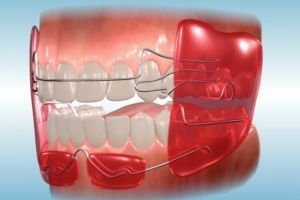 Congenital malocclusion, dentofacial pathology, complex irregularities of the dentition should be corrected in childhood.
Congenital malocclusion, dentofacial pathology, complex irregularities of the dentition should be corrected in childhood.
In orthodontics, in some cases, the Frenkel apparatus( function controller), named for the author, is used to solve these problems.
Contents
- General view of
- When is it used?
- Construction types
- Manufacturing process
- Installation and duration of treatment
- As output
General view
At the heart of the device is a metal frame on which the boards and pelots are made of plastic. For the manufacture of the palatine, lingual and vestibular arch, a medical wire with a diameter of one millimeter is used.
During the bending of the arcs their ends are tightly fixed in the middle of the shields. To delay the growth of the jaws, in order to permanently pressurize the 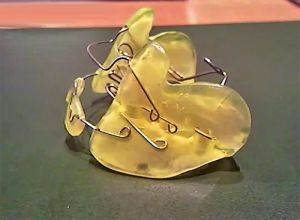 , the arcs are fixed on the incisors, canines with the help of loops. The plates of shields and pelots have the shape of an oval with smooth lateral sides. Their width is not more than 2.5 millimeters and depends on the type of anomaly.
, the arcs are fixed on the incisors, canines with the help of loops. The plates of shields and pelots have the shape of an oval with smooth lateral sides. Their width is not more than 2.5 millimeters and depends on the type of anomaly.
Frenkel's orthodontic apparatus has a wide spectrum of action, it is comfortable for the patient, it is biologically compatible with its organism. Each model is made individually for each patient, taking into account the peculiarities of the structure of its oral cavity, upper and lower jaws.
When used?
The orthodontic device is designed to ensure the harmonious growth and development of the dentoalveolar system. Using the device, orthodontists achieve that a small patient is freed from bad habits associated with sucking fingers, laying the tongue. In addition, he regains and comes to normal breathing function.
Acting on certain muscles, dentition and alveolus segments, the elements of the device correct the defects of nature:
- differences in tooth size;
- narrowed dentition;
- crowding of teeth;
- distal bite, when the upper row of anterior teeth strongly protrudes;
- with mesial bite, when the lower dentition is advanced;
- prognosis, characterized by the forward extension of the chin, lower lip;
- non-closure of lips, crevice between rows of teeth as a result of open bite;
- a neutral occlusion against a background of narrowing of the dental arches and underdevelopment of the processes of the alveoli.
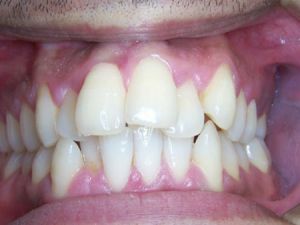 All these pathologies of development can be corrected by the function regulator.
All these pathologies of development can be corrected by the function regulator.
The functional action of the device will lead to positive results if the treatment is started on time. Optimum is the age period from four to ten years.
By combining the structural elements, adding new ones, you can achieve a high effect in the treatment.
Construction types
Depending on the purpose and features of the operation, there are four types of Frenkel apparatus designs( in the photo on the right - from top to bottom 1, 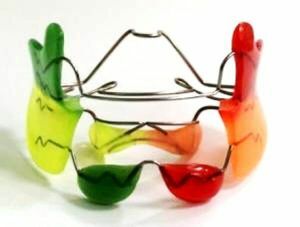 2, 3 and 4 device type):
2, 3 and 4 device type):
- The design of the first type device is aimed at correcting the abnormal arrangement of the teeth, distal occlusion. The device has arches of the palatine and sublingual, or lingual. On them fastened pelotes for the lower and upper lips, shields on the sides.
- When the incisors of the upper row are excessively inclined, the regulator with the palatal arc,
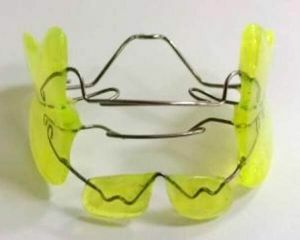 , uses transparent hinges to the canines. Double peloses in the area of the lips help stimulate the growth of the jaw to perform forward-backward movements. Side shields are characterized by a close fit to the dentition and crest of the alveoli. This is the second type of device.
, uses transparent hinges to the canines. Double peloses in the area of the lips help stimulate the growth of the jaw to perform forward-backward movements. Side shields are characterized by a close fit to the dentition and crest of the alveoli. This is the second type of device. - The design of the third type will relieve the prognosis, preventing the soft tissues located near the dentition of the upper jaw from expanding. Therefore, the pelots are fixed in the area of the upper lip, and the vestibular arch presses the incisors at the bottom, the palatal - at the top.
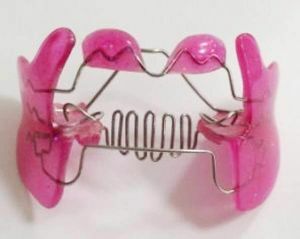
- In regulators of the fourth type , the pelos will only need the lower lip, the vestibular arch to the teeth of the upper row. The role of the palatine arch is that it returns the upper teeth directed inwards. Tightly adhering to the dentition, the metal pads on the sides strengthen the healing effect, correcting the open bite, normalizing breathing, speech.
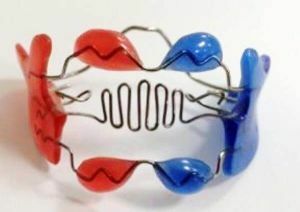
Correct type selection and professional installation of the device allows you to cure the most complex bite pathologies.
In each specific case the device is manufactured only after the initial examination of the patient and the diagnosis.
Manufacturing process of
Make a regulator based on the impressions of both jaws, which show teeth, appendages of the alveoli, and folds on the side of the tongue.
The obtained models are fixed, correlating with the design of the right occlusion. The specialist designates the location of the side shields, which should not closely adjoin the alveolar processes, the dentition.
Lip pens should also not be touched. Modeling the device, the specialist applies wax on the places of location of the cheek shields with a layer thickness of 2.5 millimeters, and in the region of the processes and teeth of 3 millimeters. On the basis of casts in the laboratory, working and diagnostic models of gypsum are made.
Engrave structures in the presence of the patient, trying on them and determining the correctness of the manufacture of wire elements, shields and pelots. The final part of the work consists in polymerization of the device, processing, grinding of components from plastic.
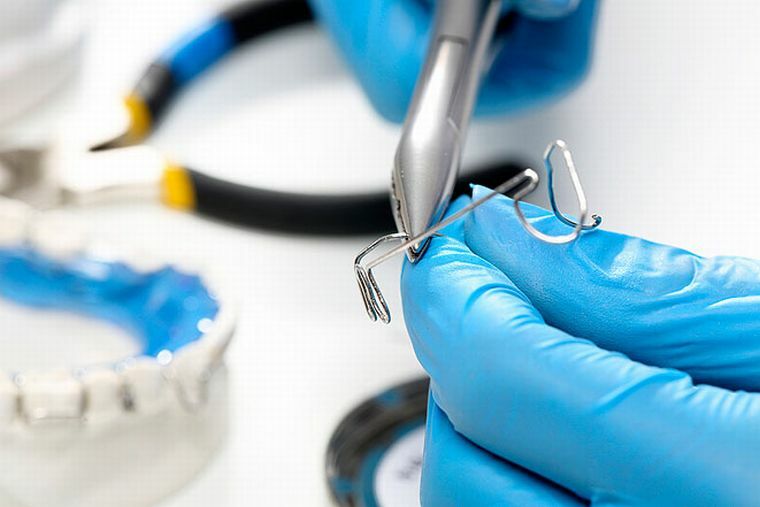
Setting and duration of treatment
The function regulator is installed on both dental rows. In this case, the teeth are provided with dense therapeutic support by the elements of the construction. In order to avoid any gaps in the operation of the device, after fixing the contact surfaces are checked by the orthodontist.
The device affects not only the teeth and jaws, but also the muscle groups involved in the formation of the bite, the development of the jaws.
Treatment takes place in a comfortable for the child conditions. During the therapeutic course, the specialist can accurately monitor and control the course of treatment.
It lasts from four to eight months, with complex pathologies - up to a year and a half. Correction will be faster and more successful if the device is installed in four to five years, when the base bite begins to form. During the correction of dento-maxillary anomalies, it is several times changed to another.
Install the structure at night, during the day it can also be inserted for several hours. Talk and chew while not allowed.
As a conclusion
Summing up, we will study the opinion on the correction of the dentition with the help of Frenkel's apparatus and get acquainted with its cost.
My son's teeth are not properly formed. In three years he could not close his jaw, because his teeth were sticking out at the top. The child was difficult to chew, he did not speak well.
And saved us the function controller. In our clinic it was made specially for my child. At cost, it turned out inexpensively.
But most importantly, the baby gladly allowed him to install. He did not interfere with him, did not press on his teeth, and within six months the first improvements were noticeable.
Now my son is five years old. He has a normal tooth structure, he began to pronounce sounds correctly. I did not think that the device would help us. But he really gave my son the opportunity to develop properly.
Tatiana, Novosibirsk
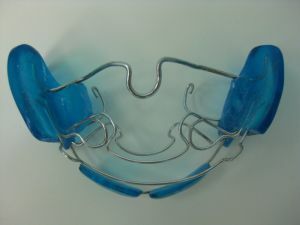 The price of the Frenkel regulator is high due to individual manufacture. On average, it will cost 7-15 thousand rubles.
The price of the Frenkel regulator is high due to individual manufacture. On average, it will cost 7-15 thousand rubles.
The cost varies more or less depending on the type of device, the complexity of the treatment, the preparation of the dentition.
The advantage of the device is its ability to use it for severe violations in the structure of the jaws, when other orthodontic designs and methods of treatment do not help.
